Sparstadstølen part 2 - the butter, the vagaries of goat milk, and esoteric tasting notes
Thoughts the equipment used in butter making, and terroir in milk foods. Also, check out the new audio tab below!! Please Let me know if it is working.
This picks up where I abruptly ended the last piece, with Katharina just wrapping up milking her cows. You now join us, in a wood milk shed, at a summer farm in Norway known as a Seter or Støl. It smells of leather and old wood, cow urine, wet goats. Not the stench you are hit with when you drive past a crowded feedlot. It smells how a barn should smell.
She milked a few of her goats in a manner typical in Norway; standing with her legs over the goat’s neck, bending and almost laying on top while milking. It looks awkward, but works, and I’ve seen historical photos of “Budeia” (woman dairy farmers) doing the exact same thing. It’s a method that allows one to milk goats without a stanchion, with no restraints. The goats have to be accustomed and willing, and perhaps feel comforted in this embrace. Anyone who has read Temple Grandin will recognize this concept. A general theme of the pastoral people I visit is an understanding of the psychology of the livestock they live with. Less forcing and control, more talking and convincing through the play of reward and punishment at the root of the motivation systems of social creatures like goats, cows, pigeons, and humans.
Im happy to share these stories, and am hoping to obtain the degree of financial security to allow me travel in a more organized way, to more effectively document these traditions and give back to the people I learn from. Paid subscription on Substack is helping me immensely, each little bit adds up.
I washed my coffee cup in the stream and tasted a few squirts of this milk. Warm goat milk strait from the teat is a special treat. Especially this summer milk, from an animal eating a huge range of plants, free choice, from a tundra-like landscape. Boggy in the valley bottom, drier heather moors below steep rock faces. This leads to one layer of terroir; a tangle of various compounds that I cannot unravel, but that I detect as greater depth of flavor. More layers and excitement. It had very little of what people call “goatiness”. For a long time I have said that goat milk is like seafood, it doesn’t smell fishy when it is super fresh. “Your goat cheese should be like sushi, made from milk that doesn’t smell goaty. That is an indication of milk breaking down, going bad.” I now feel that there are multiple types of goaty flavor, coming from different directions. I have heard farmers in the US say the milk of some goats tastes goaty straight from the teat. I now have some confirmation of that sensory observation. By the way, we need a more precise term than this vague “goatiness”.
The Norwegian Dairy Goat formerly had a genetic predisposition to have pronounced goaty flavor, and a lack of certain casein types that produce higher yields in cheese. Breeding programs selected out these “negative traits”, French alpine genetics were introduced, and the breed was “improved”. But Katharina said she and others missed the older, goaty milk. Norwegian cheesemakers historically focused on the family of whey cheeses known as Brunost. The “white cheese” made in association were often less important. So yield of this rennet curd would be less of an issue, you would capture all the lost fat in the brunost. And the goaty flavor was desired, many cow dominant brunosts actually have a certain amount of goat whey or milk added to lend this goaty note.
Butter. People are sometimes astonished when they see how much I put on a piece of bread. Others are annoyed. I watch with condescension as people spread the thinnest veneer onto toast. Life is fleeting people. You can put more butter on your toast. Especially when it is high quality butter from summer pasture, bright yellow, full of good fats, low in the poisons and crap typically used to grow animal feed. It could be the ultimate expression of terroir in milk, this emblem of motherly love at the root of existence. Butter reminds me that the universe is a benevolent, caring place.
Back to Sparstadstolen. Milking was finished. It was still early on a rainy morning, and before I tucked into a bowl full of porridge I took a dab of the distilled sunshine sitting in front of me. Straight up, no bread, no chaser. The ticking of the clock slowed to a halt. My busy brain short circuited, I closed my eyes and let the milky bliss ripple through my body in waves, coursing through the salty sea of my blood. I forgot where I was, my mouth fell slightly ajar. Returning to my senses, I added a healthy dose to my porridge, which allowed it to go down smooth as silk. Everyone at the table was staring at me.
After breakfast Katharina demonstrated how she seperates the cream from udder-warm cow milk. This gave me a sense of the incredible kinetic energy that is put into this butter. Her grandmother had farmed here until the 60s, then the farm sat unused until Katharina began working it again in the 90s. It appears she dusted off the old equipment and began using it, just how her grandmother had. She was making a point, that these old tools still work, and are often much more reliable than newer ones. This seperator needs no electricity. It is human powered.
She began turning it slowly, while gazing out the window. The heavy, solidly built machine emits a wah wah pulsating hum, the volume and tempo ramping up as the speed increases. She puts her whole body into it, in a well rehearsed dance. It is was agressive, the sound builds like an airplane taking off. Skim milk begins pouring from one spout, and a smaller trickle of cream from the other. I was impressed. It was the intensity of her actions, rather than words, that made an impact on me.
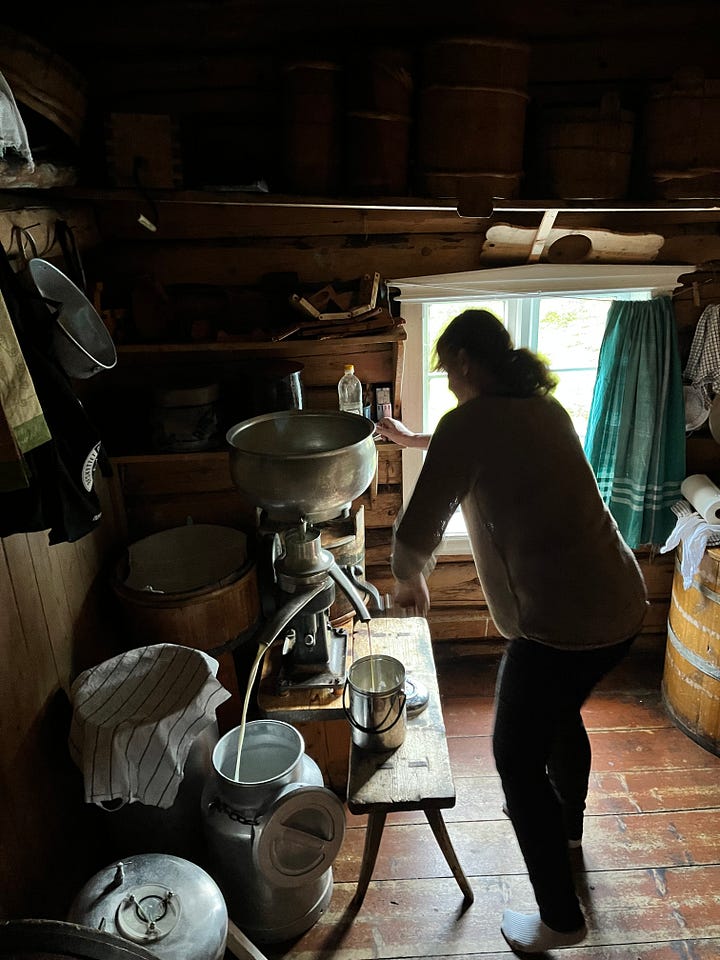
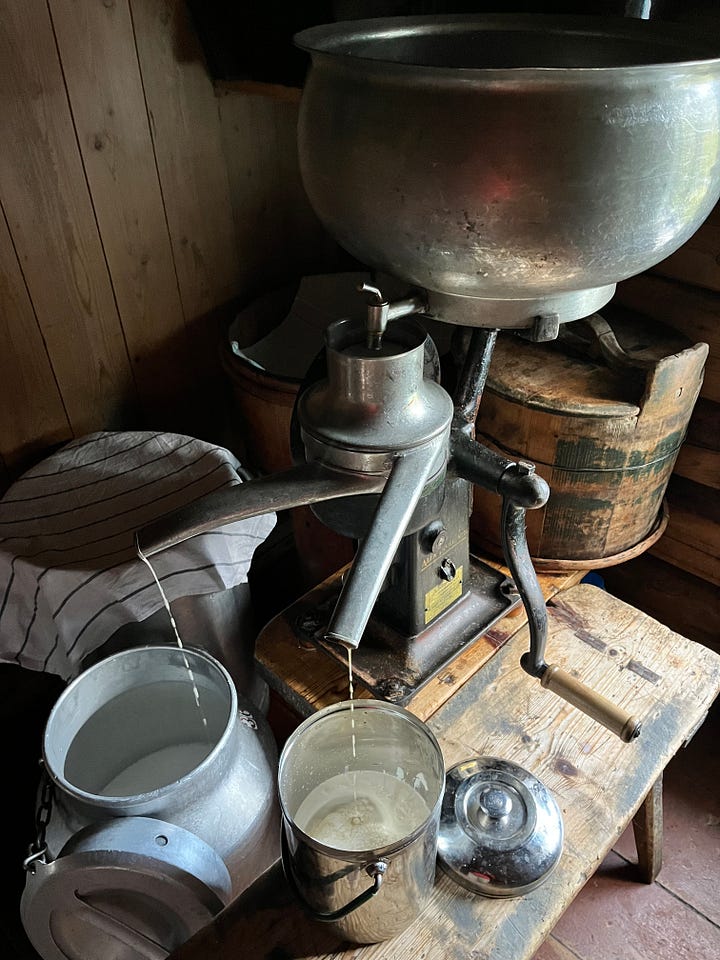
The sweet cream was dosed, with a few spoonfuls of a batch that had already soured, and then was left in a cool room. We took the sour cream from the last few days and poured it into a small, hand-turned churn. She began turning this, and explained how to find the rhythm by sound and feel as I gave it a try. Not so fast that the cream stays on one side through centrifugal force. Slow enough that it drops from the top of each rotation. It took over 30 minutes to get there, as the cream and air were cold. The cream thickens into a whipped cream consistency, and this can be felt by the hand on the wheel. A sudden and dramatic transformation takes places, as the cream phase-shifts into butter and buttermilk. With this slow, tactile method, that moment can be felt and the churning stopped immediately. The butter is washed in water from a mountain stream, and a small piece left as an offering for local deities. The ritual of this process - the matrix of traditional folk knowledge, mythology, physical effort, symbiosis with livestock and landscapes - blew me away.
This is some of the best butter I have tasted. I am convinced that this is partially due to the slow churning, with human senses fully engaged, a practiced hand controlling the throttle. Another butter in the top tier of my flavor memory bank is made in an old school wooden plunger churn, that was rigged to a motor as a labor saving device. But it still took 20+ minutes, and the decision of when to stop was considered paramount. It was also washed in stream water, and came from heritage breed cows grazing extensively on diverse alpine forest and meadow ecologies.
A slightly more esoteric explanation is the intention and energy of the humans making it. There is an energetic exchange that takes place when we interact with a liquid in this way. The best cheeses and butter are made by people who want to make really good food, who believe in their work, and focus their efforts on it with single minded intensity. These foods not only taste of a place, they taste of the animals who make them. The boundaries between people and place, human and non human, internal and external dissolve, like a spoonful of sunshine-imbued-fat, in my grinning mouth.
My visit to Sparstadstolen lasted less than 3 days, but I will never forget it. Experiences like these are the reason I travel. I have more questions than answers, and that is a good thing. I’ll close with a quote from a book that is inspiring me at the moment, to write from the heart, letting my senses guide me, letting words convey the direct, subjectivity of the senses that forms my reality.
Also, is the Audio tab playing via email? If not, you may have to view in your browser.
Language is not a fixed or ideal form, but an evolving medium we collectively inhabit, a vast topological matrix in which the speaking bodies are generative sites, vortices where the matrix itself is continually being spun out of the silence of sensorial experience….
Ultimately, it is not human language that is primary, but rather the sensuous, perceptual life-world, whose wild, participatory logic ramifies and elaborates itself in language.
-David Abram, “The Spell of the Sensuous”, page 58

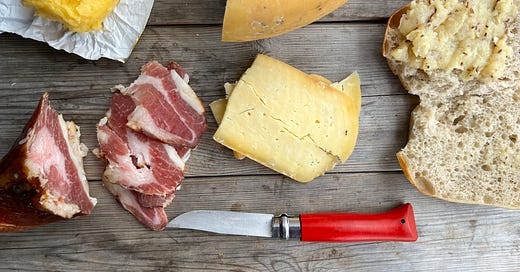


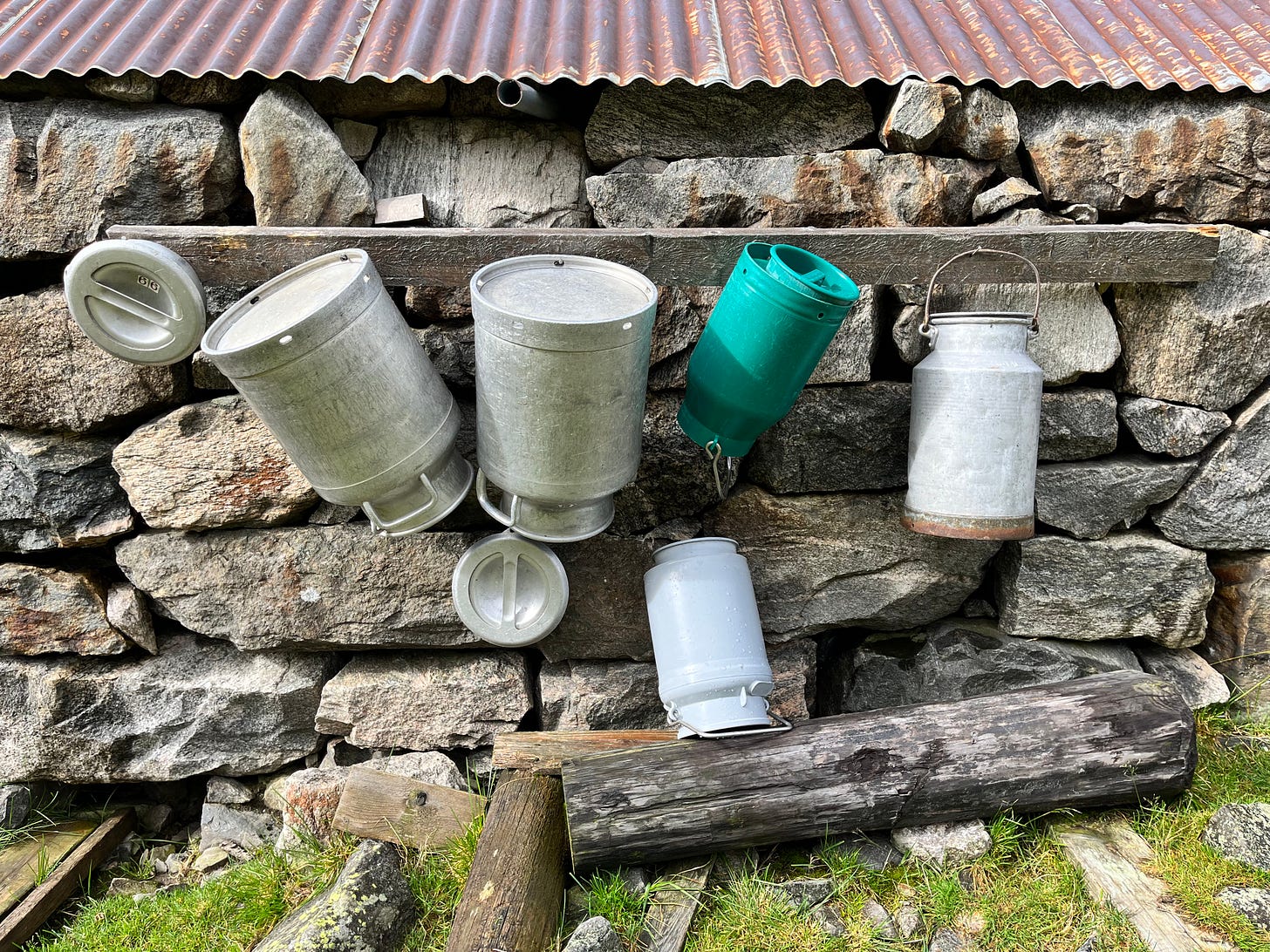

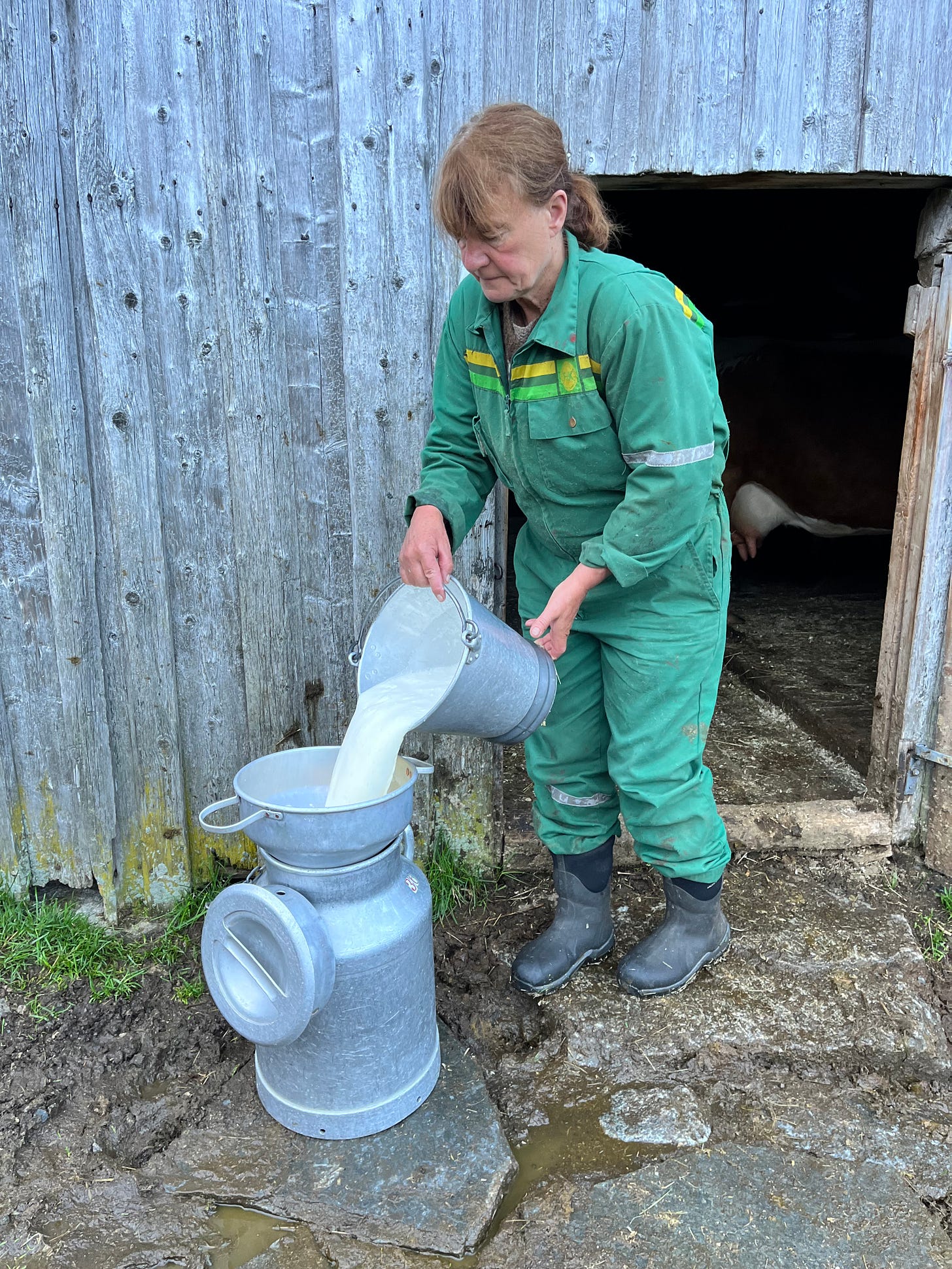
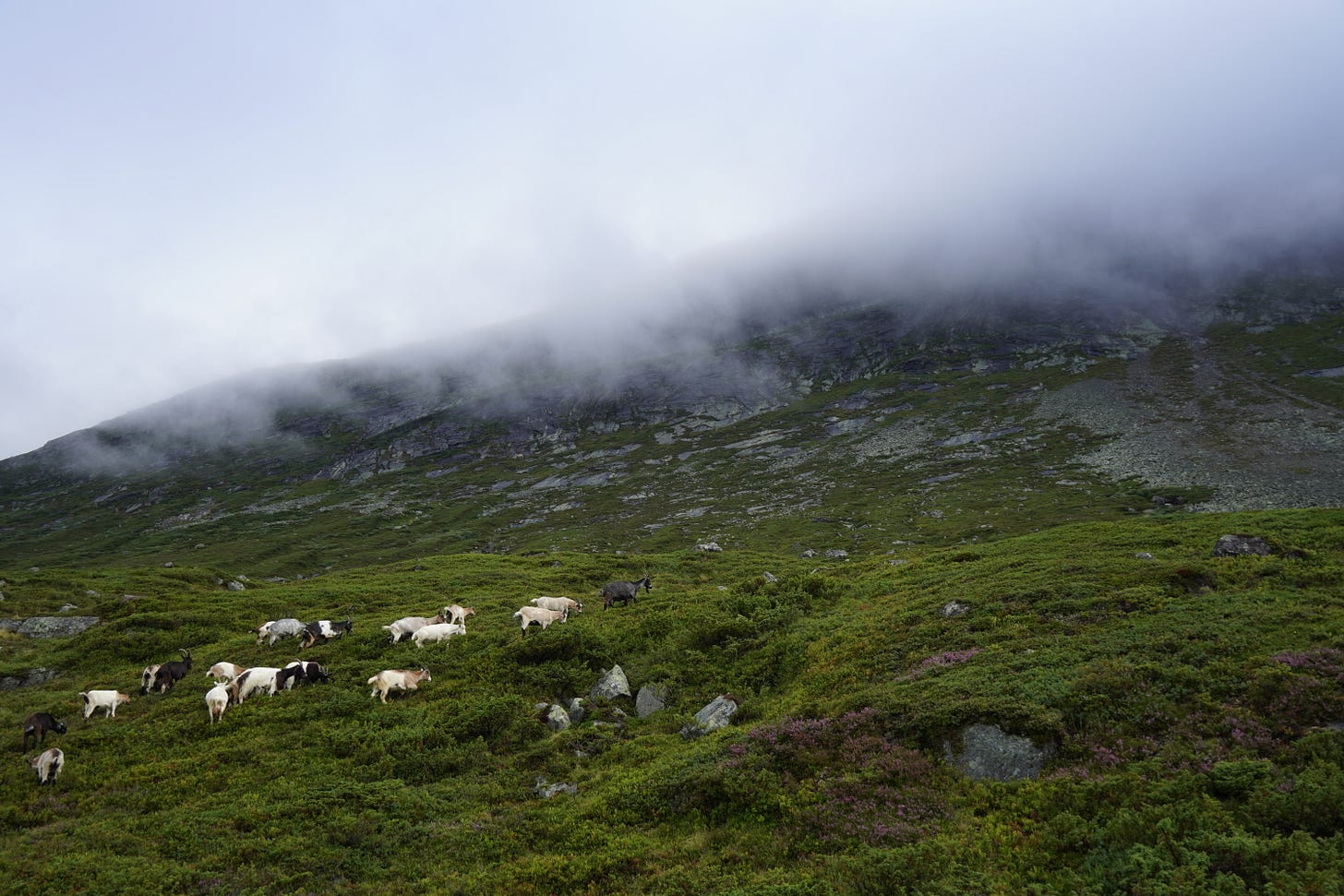
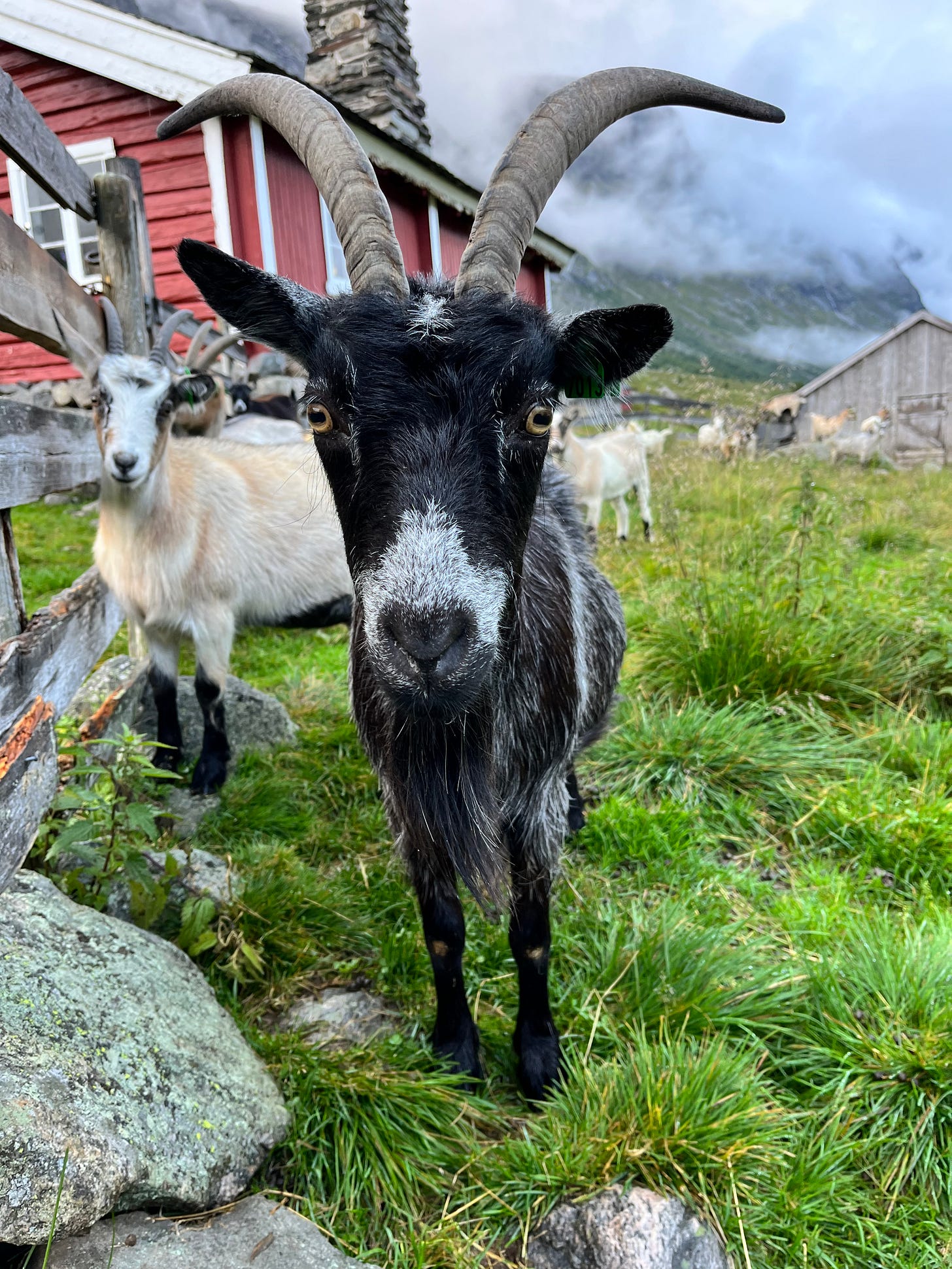
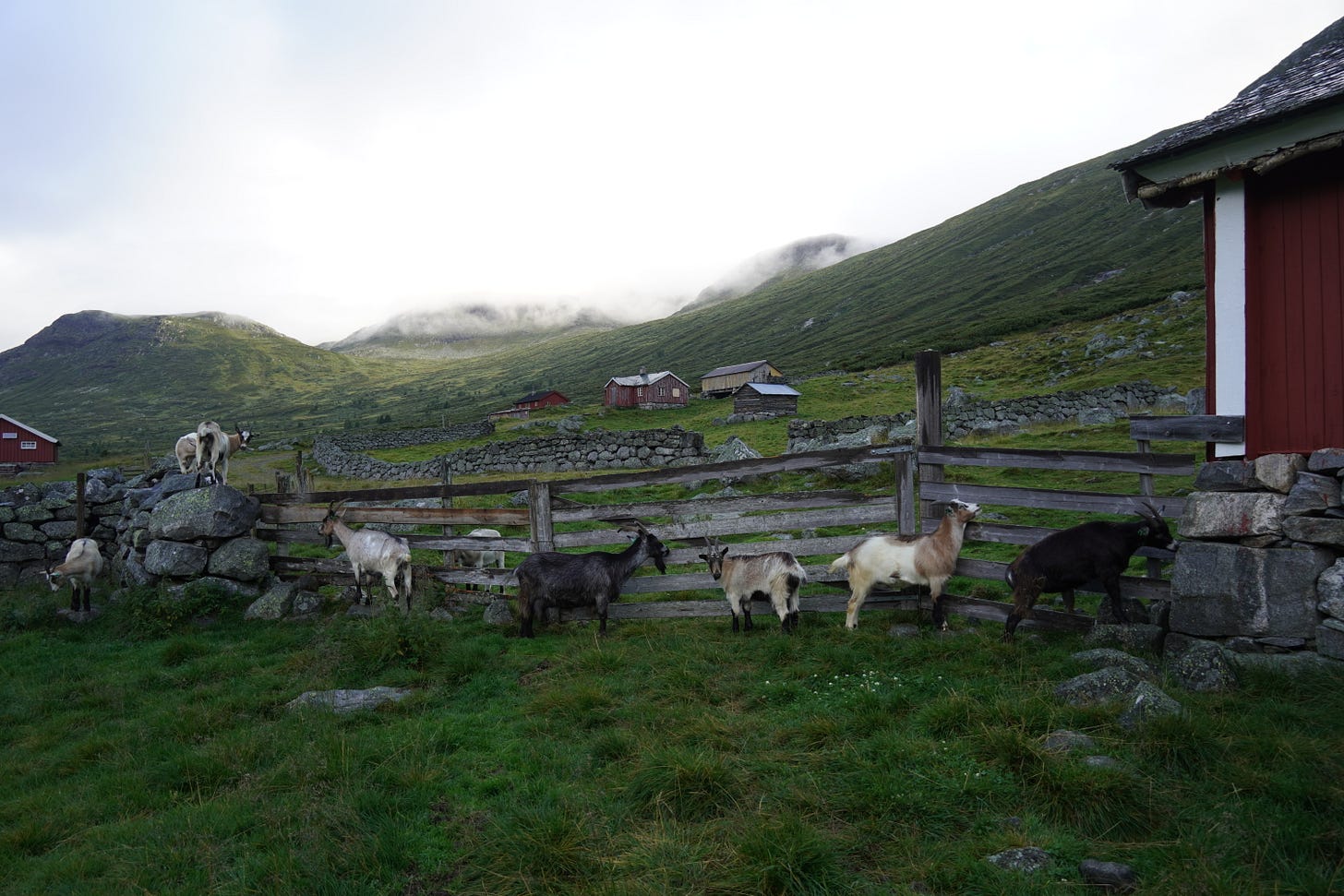
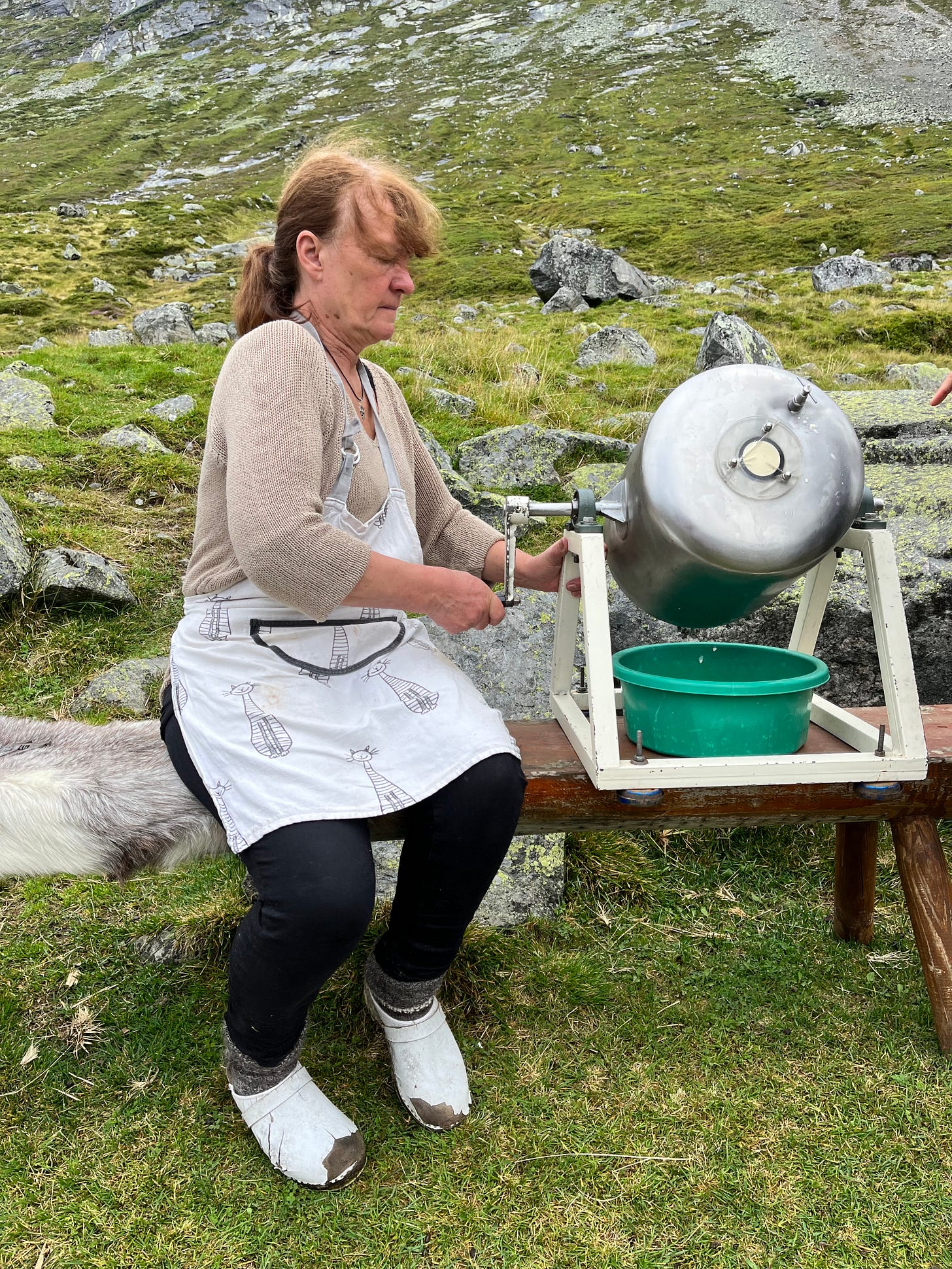

Beautiful post Trevor.
Could you share the goats’ daily routine?
How long are they outside? Is there shepherding involved?
Much more personal approach than just the text. Also less overwhelming (14 mins vs scrolling for an unknown amount). And frees consumption to include being on the move versus stuck to a screen. However one misses the beautiful visual artwork that accompanies text.